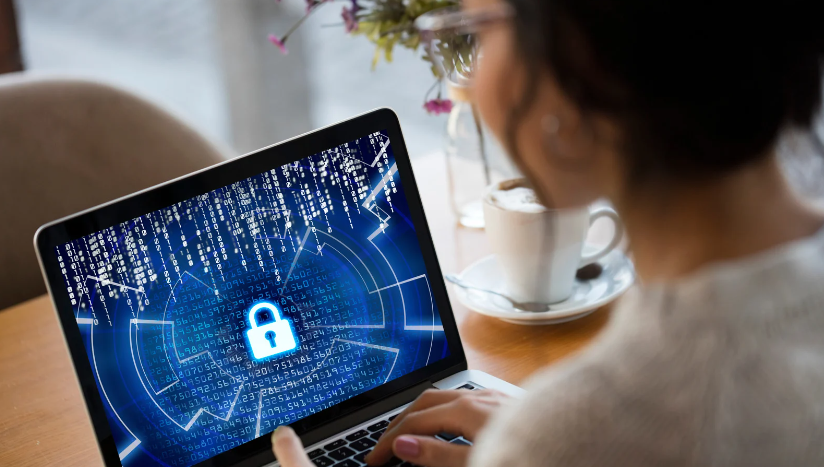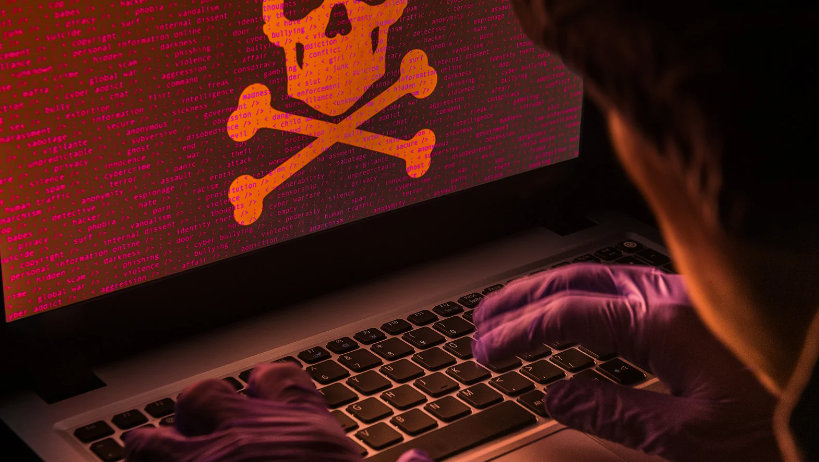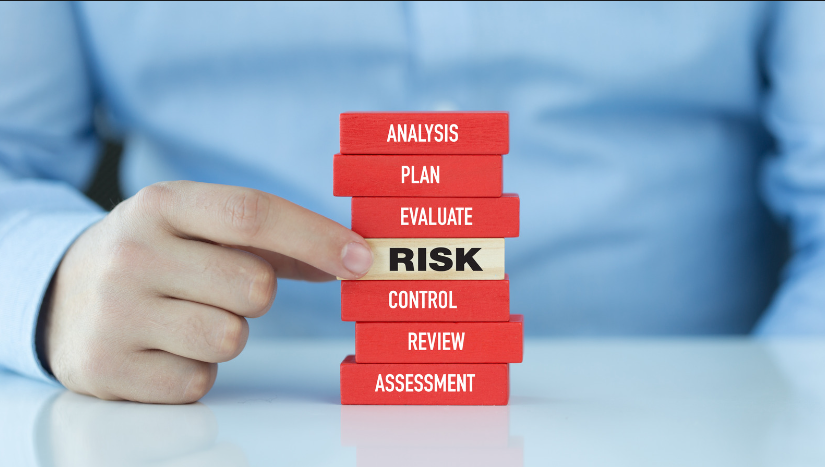As we move into 2024, the digital world keeps changing, which means that new safety problems are always coming up. From the Internet of Things (IoT) to cloud computing, technology is becoming more and more important in our daily lives and at work. This makes it more important than ever to have strong safety measures in place.
Cybercriminals are getting smarter and using cutting edge tools like artificial intelligence (AI) to plan and carry out more complicated strikes. This year, there will be a lot of new trends in cybersecurity as people and businesses get ready to deal with these new dangers.
To keep our digital information and systems safe, we need to face these top 10 challenges. This shows how important it is to stay ahead in the world of cybersecurity, which is always changing.
1. Increasing Sophistication of Cyberattacks
Attackers are getting smarter and more complicated as time goes on. They are always coming up with new ways to break into computers, steal information, and damage them. Normal security measures can’t catch them because they use high-tech tools and methods.
Why It’s Necessary:
As tech gets better, hackers get better tools. Threats that are new and smarter can still get into systems that don’t have their security updated.
How to Do It:
- To fix security holes, make sure that all of your tools and apps are always up to date.
- AI and other cutting edge security technologies can help you spot and stop complex threats.
- Always teach your employees about security so they can spot and avoid phishing or other scams.
Case Study:
When we think of a complicated hack, we all think of the WannaCry ransomware attack in 2017. It was bad for computers in 150 different places. Some of the problems it caused are:
- People were locked out of their computers and were asked to pay Bitcoin.
- Hospitals in the UK and health care in general are having a lot of issues.
- It is thought that billions of dollars were lost because of the shutdown and efforts to get things back to normal.
Solving the Issue
To deal with a problem like the WannaCry attack, you need to:
- Putting affected systems in a separate area right away: This stops ransomware from spreading to other computers.
- Using Security fixes: Microsoft put out fixes for older versions that aren’t being updated anymore. When these fixes are put in place, they can close security holes.
- Make a backup and recovery plan: You should regularly back up your data so that you can get it back if there is an attack. This will lessen the damage.
- Security training: In order to keep your staff safe, you should teach them how to stay up to date and be careful with email files and links.
- Use Security Tools: To find and get rid of malware, use advanced tools that are designed to find and stop all kinds of risks.
Future Trends Related to Increasing Sophistication of Cyberattacks
- AI and ML in Defense: AI and ML will be used more and more in security systems to help figure out and stop complicated attacks.
- Blockchain for Security: More and more, blockchain technology is being used to protect data exchanges and make sure that no one can change them.
- Quantum Computing: Use quantum computers to make cryptography that is not affected by quantum physics. This way, data can be kept safe from future threats.
2. Diverse Attack Vectors
At this point, there are many kinds of cyberattacks. Malware that can get into your system with just one click, ransomware that locks you out of your files until you pay, and even DDoS attacks that can shut down websites are all examples. Heist artists have more ways to try to get into our digital lives when attack routes are spread out.
Why It’s Necessary:
Hackers can get in through new gaps we make when we use more and different types of tech. It is important that hese threats should not get into information or processes.
How to Do It:
- For safety, use tools that can defend you against many risks.
- Keep your software up to date so that any bugs that could be used against you are fixed.
- Find out about the different types of online threats and how to avoid them.
Case Study
The 2016 Mirai swarm attack is a well-known example of using more than one type of attack. It mostly attacked routers, cameras, and other Internet of Things (IoT) devices. The following were big problems:
- A lot of Internet of Things (IoT) devices were hacked and used to launch very large DDoS strikes.
- Twitter, Netflix, and PayPal, among other well-known sites and services, were down for a short time.
- Brings to light the fact that IoT gadgets are often not very safe.
Solving the Issue
If you want to solve a problem like the Mirai virus, think about these steps:
- Changing the Default Credentials: Many IoT devices are broken into by using the default passwords and usernames. Changing these is an easy and effective way to stop them.
- Segmenting the network: To lower the risk, keep IoT devices on a different network from important data.
- Regular Updates and Patching: Make sure that all of your software and gadgets are regularly updated to protect yourself from known security holes.
- Device Management: To keep an eye on and control the safety of connected devices, use tools for device management.
Future Trends in Diverse Attack Vectors
- Enhanced IoT Security: As the number of IoT devices grows, manufacturers and security experts are trying to make security measures that are better for all of them.
- Behavioural Analysis: Using this method to find strange actions that might be signs of a cyberattack, even if the method is new and not known.
- AI and Machine Learning: Using AI to guess and stop strikes based on how they act instead of known patterns.
3. Target Variety Expansion
Hackers are no longer only after big companies or the government. They are also after small businesses, hospitals, schools, and even people. This is because the security at these smaller businesses might not be very good, which makes them easier to hack.
Why It’s Necessary:
Every business, no matter how big or small, has information that can be used.It is very important to keep your information secure if you don’t want to lose money, have your name stolen, or experience other cyber harms online.
How to Do It:
- To keep your information safe, use simple steps like strong passwords and regular software changes.
- People you work with or family should learn about the risks and signs of cyber dangers.
- Tools and software made to find threats and stop them should be used.
Case Study
Over 147 million people were affected by the Equifax data breach, which was a huge security leak. Important problems were:
- The public got their hands on Social Security numbers and other private data.
- Someone got in because of a flaw that wasn’t fixed in time, even though there was a fix ready.
- It took Equifax a long time and wasn’t clear at first, which made people lose even more trust in them.
Solving the Issue
In 2013, attackers broke into 40 million Target credit and debit card accounts. The store fixed the issue and made security better in a number of ways.
- Immediate Response: Target admitted that there had been a breach and contacted customers who were affected, giving them free credit monitoring services.
- Enhanced Security Measures: To keep card information safe at point-of-sale systems, the company spent money on high-tech encryption.
- Executive Overhaul: Target changed the people in charge of cybersecurity and the way it is set up so that it can better handle future threats.
- Increased Investments in Cybersecurity: A lot of money was spent on technology and training to stop future leaks.
Future Trends in Target Variety Expansion
- More attention on small and medium-sized businesses (SMBs): As SMBs become more aware of their vulnerability, they will take more steps to protect themselves from online threats.
- Personal Cybersecurity Products: The market for personal cybersecurity products like antivirus software, VPNs, and safe routers for people and families is growing.
- Cybersecurity as a Standard Business Requirement: More and more, insurance companies, regulators, and business partners will expect companies to have strong cybercrime measures in place.
4. Nation-State Actors: Explanation
Not long ago, hackers only wanted to steal money or information. Now, safety is about a lot more than that. Countries as a whole are now breaking into other countries’ governments, businesses, and people to spy on them, mess with them, or even attack them to get an edge in business, politics, or the military.
Why It’s Necessary:
Hacking is much bigger and more complicated when nation-states are involved. These are the things for which you need to use improved security methods to keep safe.
How to Do It:
- Threat intelligence and advanced cybersecurity systems need to be improved in governments and business organizations.
- Countries and businesses can better prepare for and avoid strikes if they share information about threats.
- It is very important to get regular hacking checks and use the newest security technologies.
Case Study
Take the 2014 attack on Sony Pictures Entertainment, which was said to have been done by North Korea. People said it was because of the movie “The Interview,” which made fun of North Korea’s leader. Some of the issues were:
- Theft and public leak of sensitive data, including personal information about employees and their families, emails, and executive salaries.
- Destructive malware wiped data from Sony’s computers, rendering them inoperable.
- It led to significant financial losses and raised concerns about national security and the vulnerability of private companies to state-sponsored attacks.
Solving the Issue
To fight the danger that nation-state actors pose:
- Better Threat Intelligence: Set up tools that can find and analyse threats quickly.
- International Cooperation: Groups of countries and organisations should work together to share information and plan how to deal with cyber dangers.
- Making infrastructure stronger: Update and patch systems often, use encryption, and keep networks safe from attacks.
- Incident Response Plans: Have a clear, tried-and-true plan for how to handle different kinds of hacks, including ways to communicate and get back online after an attack.
Future Trends in Nation-State Cyber Activities
- Cyber Defence Initiatives: Countries are likely to put more money into cybersecurity defences and create military and intelligence groups that are specifically trained to do cyber operations.
- International Cybersecurity Laws and Agreements: People may try to make international rules and laws for cyber fighting and spying.
- Advanced Cybersecurity Technologies: The creation and use of more advanced cybersecurity technologies, like AI and machine learning, to find threats and stop them.
5. Supply Chain Attacks
Supply chain attacks happen when an outside partner or source with access to your data and systems is used to break into your system. This could be a software company or a cleaning service that has access to your buildings. Because they take advantage of your trust in your network of providers, these attacks are very dangerous.

Why It’s Necessary:
As businesses connect with each other more, a single flaw in one service can put all of them at risk.
How to Do It:
- For all outside providers, you should do full security checks.
- Make sure that all third-party services are up to date on how they handle security.
- Allow third-party providers access to only “need to know information”.
Case Study
In 2020, someone broke into SolarWinds and did a supply chain attack. There was bad code added to the company’s software, which was then sent to its clients, which included many businesses and government agencies in the U.S. These were some of the problems:
- People getting into private data on government and business networks without permission.
- A clever spying operation that went on for months without being found.
- It showed that supply chain flaws can make even the safest networks vulnerable.
Solving the Issue
To address a supply chain attack like SolarWinds:
- Rigorous Vendor Assessment: Check all vendors’ and suppliers’ security steps on a regular basis.
- Implement a Zero Trust Architecture: Assume that no one in the network can be trusted until they have been checked out.
- Segment Networks: To lower your risk, separate important tools and data from the rest of the network.
- Continuous Monitoring and Detection: Use advanced threat detection tools to keep an eye on the network for any strange behaviour.
Future Trends in Supply Chain Attacks
- Greater Scrutiny on Software Development Security: Companies will use safe methods to create software so that harmful code doesn’t get added.
- Increased Transparency and Collaboration: Companies will expect their suppliers to be more open about how they handle security, and they will work together more on threat information.
- Adoption of Blockchain Technologies: Some businesses may turn to blockchain to keep records in a safer, more open way that can check the integrity of software and goods.
6. IoT Vulnerabilities
The Internet of Things (IoT) is a term for everyday items that are linked to the internet, such as cars, refrigerators, and watches. These tech items are liked by many because they make life easier, but hackers can find new ways to use them. A lot of IoT devices don’t have good security, so it’s simple to hack them and take control of them or use them to attack other parts of a network.
Why It’s Necessary:
As more things connect to the internet, the risk of being attacked rises. Making sure these things are safe protects not only the things they connect to but also the whole network they’re connected to.
How to Do It:
- Strong, unique passwords should be used instead of the usual ones.
- Update the software on your devices often to fix security holes.
- Separate IoT devices from important network resources with network separation.
Case Study
In 2016, the Mirai botnet attack spread hundreds of thousands of Internet of Things (IoT) devices by using weak places in the IoT. Later, these gadgets were used to launch large-scale Distributed Denial of Service (DDoS) attacks against websites, which stopped them from working. Major problems that came into picture were:
- Major websites and internet services were severely hampered.
- Exposed how widely unsecure IoT devices are.
- Showed how big hacks using IoT devices could be.
Solving the Issue
To address IoT vulnerabilities, consider the following:
- Secure Configuration: Make sure that all IoT devices are set up properly and that any services that aren’t needed are turned off.
- Network segmentation: Keep IoT devices away from important parts of the network to prevent damage.
- Regular Checks and Updates: Always keep an eye on IoT devices for any strange behaviour and make sure they are up to date.
- Awareness and Training: Teach everyone involved about the risks of IoT devices and how to lower them.
Future Trends in IoT Vulnerabilities
- Enhanced Security Standards for IoT Devices: It’s possible that manufacturers will be put under more pressure to meet higher security standards.
- Development of IoT Security Technologies: There will be new technologies and tools that are designed to keep IoT networks and gadgets safe.
- Increased Use of AI for Security: AI could be used to find strange behaviours in IoT devices that could mean they’ve been hacked.
7. AI and Machine Learning in Cyberattacks
Smarter, faster, and more powerful attacks are made possible by AI and ML. Attacks can be automated, fake messages can be made to look more real, and system flaws can be found without any help from a person.

Why It’s Necessary:
Your security needs to be just as advanced, or even more advanced, to protect against threats that use AI. As attacks get smarter, the things we do to stop threats get smarter too.
How to Do It:
- Use security tools that are built on AI to see ahead of new threats and adapt to them.
- AI systems should always be trained with the newest danger data to make sure they can spot and stop new attack methods.
- Use AI to automate routine security jobs so that human analysts can work on bigger problems.
Case Study
AI powered Deepfake has been used in spear-phishing to pretend to be executives and get workers to send money or give out private information. Important thing that happened:
- Attackers use AI to make the voice of a CEO sound real on the phone, convincing an employee to send a large amount of money to a fake account.
- The attack got around normal security measures because it used social engineering and convincing sounds made by AI.
- It showed how AI could be used in hacks that are very specific and personal.
Solving the Issue
To address the challenges posed by AI and ML in cyberattacks:
- Intelligent Detection Systems: Use AI-powered detection systems that can look for trends and guess how attacks will be carried out.
- Employee Training: Make sure your workers know about the newest cyber threats, including ones that use AI, like deepfakes.
- Data Privacy Measures: Take strict steps to protect your data so that AI models can’t use it to learn without your permission.
- Collaboration and Sharing: Take part in sharing threat data across your industry, including threats powered by AI, to make our defences stronger as a whole.
Future Trends in AI and ML Cyberattacks
- Smart AI defences: Soon, all security systems will be able to learn from new risks and change to deal with them in real time.
- Ethical AI Development: To stop people from abusing AI, rules and guidelines will be set up for its ethical development and use in defence.
- AI-Powered Threat Hunting: AI will be used more and more to do proactive threat hunting, which finds and stops problems before they can happen.
8. Regulatory and Compliance Challenges
People and businesses’ data is protected by laws and rules that change as internet threats do. Data security rules are getting stricter all over the world to fight these threats. The companies must make sure that their safety measures against cyberattacks are legal so they don’t get fined.
Why It’s Necessary:
Compliance makes sure that companies follow a basic set of safety rules to keep customer information safe. It also shows partners and buyers that you care about their information, which builds trust.
How to Do It:
- Keep up with the laws and rules about cybersecurity that apply to all the places where your business works.
- Check and update security policies and procedures on a regular basis to make sure they are still valid.
- Teach your workers about the rules for compliance and what they need to do to follow them.
Case Study
In 2018, the General Data Protection Regulation (GDPR) became law. This showed that companies all over the world need to follow the rules. A well-known tech company got a big fine for not telling people enough about how their information is collected and used for ads. Problems included were:
- Not being clear about how data was being processed and not having enough legal grounds for processing personal data.
- The fine made it clear how important it is to follow data security rules.
- It brought up the possible financial and social costs of not following the rules.
Solving the Issue
To address regulatory and compliance challenges:
- Comprehensive Compliance Strategy: Make a plan that includes evaluating risks, doing regular audits, and keeping policies and processes up to date.
- Data Protection Officer (DPO): You might want to hire a DPO or someone with a similar job to be in charge of data protection strategies and making sure they are followed.
- Training and Awareness: Set up ongoing training programmes to make sure that all of your workers know what the rules are and how important they are.
- Technology Solutions: Use tools for compliance management to make sure that all requirements are met and that compliance efforts are streamlined.
Future Trends in Regulatory and Compliance Challenges
- Global Harmonization of Regulations: There may be more work done to make data security laws consistent across different countries, which would make it easier for international organisations to follow the rules.
- Increased Use of Technology: AI and machine learning could be used to handle compliance tasks like reporting and keeping an eye out for tasks that aren’t being done correctly.orting.
- More Stringent Regulations: Regulators will probably get tougher as cyber threats change, which will mean that businesses will have to keep changing their security and compliance measures.
9. Response and Resilience Strategies
In the world of Cybersecurity It’s not a question of if an attack will happen but when. That’s why it’s important to have plans for how to respond and how to bounce back. These strategies, or plans, are what a company does when it finds a hack. They stop as much damage as possible, get back any data that was lost, and get things back to normal as quickly as possible.
Why It’s Necessary:
Businesses can lose data, have trouble running, and look bad after a cyberattack. Companies with good response and resilience plans can deal with these effects quickly and lessen their effects.
How to Do It:
- Make an incident reaction plan that spells out exactly what to do in the event of an attack.
- Back up your data often and make sure that systems can be quickly recovered.
- Conduct drills on a daily basis to get used to how to handle different types of cyber threats.
Case Study
An attack called “ransomware” was launched against Colonial Pipeline in May 2021. This pipeline sends almost half of the diesel and petrol to the East Coast of the United States. A lot of problems happened because of this event.
- Colonial Pipeline had to shut down its operations to contain the attack, leading to widespread fuel shortages and panic buying in several states.
- To get back into its systems, the company paid a fee of about $4.4 million in cryptocurrency.
- The attack caused the U.S. government to declare a state of emergency to deal with the problem of not having enough power.
- There was considerable public and governmental scrutiny over the company’s cybersecurity practices and the decision to pay the ransom.
Solving the Issue
Colonial Pipeline and other organizations took a number of steps after the attack to fix the problems and improve security:
- Immediate Containment: Right away, shut down some systems to stop the ransomware from spreading. This shows how important it is to have a clear action plan for control.
- Collaboration with Law Enforcement: They worked closely with the FBI and other agencies, which helped them get back a big chunk of the cash payment.
- Enhanced Cybersecurity Measures: Invested to make their cybersecurity systems stronger to protect against future attacks.
- Increased Government and Industry Collaboration: The event led to more work between the private sector and government agencies to make the country’s cybersecurity stronger.
- Public Awareness and Policy Changes: The attack made people more aware of the dangers of ransomware and led to policy changes about how to pay ransoms and report cyber crimes.
Future Trends in Response and Resilience Strategies
- Automation in Response: Automation and AI are being used more and more in response to find and deal with issues more quickly.
- Greater Emphasis on Cyber Insurance: Cyber insurance will become more important as more businesses buy it to protect themselves from the financial risks that come with hacking.
- Integrated Risk Management: Risk management that is more closely tied to cybersecurity will be used more in conjunction with general business risk management plans.
10. Global Collaboration in Cybersecurity
Cyber threats don’t care about country borders in today’s connected world. Anyone with the right tools can break into a foreign government or business. When businesses, governments, and cybersecurity experts work together around the world, they share information about dangers, defences, and safety plans that protect everyone.

Why It’s Necessary:
A lot of online threats are very smart and change quickly. No one country or group can handle all of these threats by themselves. Hackers can’t get to everyone if they share tools and knowledge.
How to Do It:
- Join foreign groups and forums that deal with cybersecurity.
- Tell trusted partners about new threats and the best ways to handle them.
- Create security guidelines and frameworks that everyone can use.
Case Study
The 2017 WannaCry ransomware attack is a great example of why people all over the world need to work together.
- The problems affected more than 200,000 computers in 150 countries and a wide range of industries.
- Vulnerabilities in old systems were used, even though fixes were available but not widely used.
- Proved that cyber threats affect people all over the world and need coordinated reactions.
Solving the Issue
Effective measures to enhance global collaboration in cybersecurity involve:
- Building Trust: To make it easier for countries and organisations to share threat information openly, build relationships based on trust.
- Creating Shared Platforms: Create and use shared platforms to share threat information in real time.
- Standardising Responses: Try to come up with standard ways to deal with cyber threats so that everyone can work together across countries.
- Investing in Joint Training: To improve our ability to defend ourselves as a whole, let’s do joint cybersecurity drills and training programmes.
Future Trends in Global Collaboration
- Increased Public-Private Partnerships: More programmes that bring together government agencies, private sector groups, and academic institutions to work together on safety issues.
- Unified Cybersecurity Standards: Movement towards adopting unified, global cybersecurity standards to make accountability easier and security better.
- Advanced Threat Sharing Platforms: Creating more advanced and safe ways for countries and organisations to share danger information in real time.
Conclusion
Thanks to new tools, the way we live, work, and talk to each other will be very different by 2025.
A lot of new technologies are being made quickly, like AI, quantum computing, and the Internet of Things (IoT). These technologies will connect the world even more.
The link makes things more difficult, especially when it comes to safety, but it also opens up new opportunities.
Click here, to know more about Incident Response.









